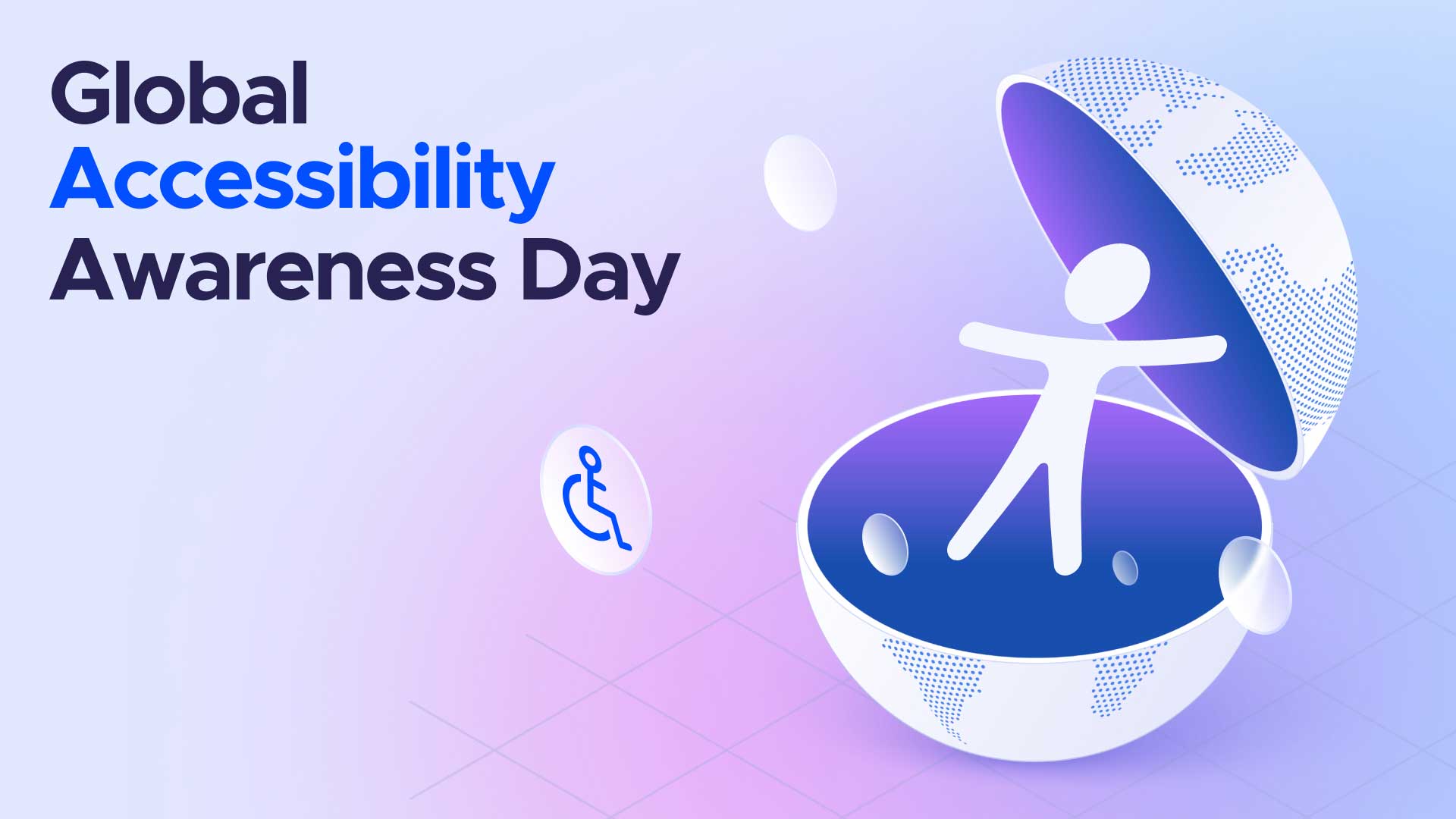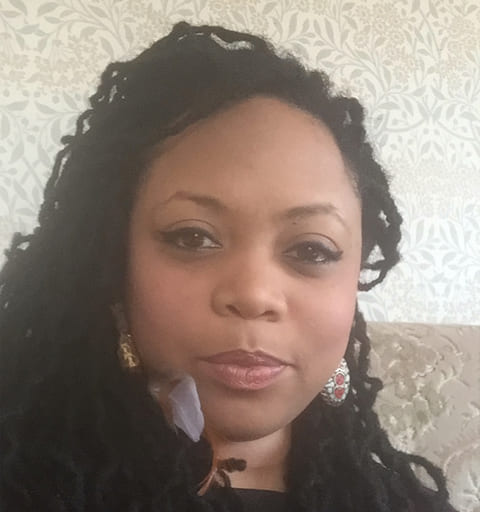What is Global Accessibility Awareness Day?

Global Accessibility Awareness Day (GAAD) marks our progress and the journey ahead in digital accessibility. Tremendous efforts have been made to enhance physical accessibility—think wheelchair ramps, designated parking, and crosswalk auditory signals for the visually impaired.
Despite progress in many areas of life, digital spaces still need work. GAAD is a powerful reminder of this ongoing mission, highlighting the need to continue moving forward for a more accessible online world for people with disabilities.
As we navigate the accessibility of apps, web pages, and documents, GAAD encourages us to ask critical questions. What goes into creating inclusive digital experiences for everyone? Can people with disabilities effortlessly interact with our digital content? How inclusive are our web design practices in addressing a spectrum of physical and cognitive needs?
Let’s begin by exploring the meaning behind this important day. We’ll answer some key questions and look at GAAD’s history to understand the purpose of driving the day. Ready to get started?
Understanding Global Accessibility Awareness Day
GAAD is an annual event fostering understanding and driving conversation about digital accessibility and inclusion for people with disabilities.
GAAD, which originated in 2012, occurs on the third Thursday of May each year. Its primary goal is to encourage inclusive design and development awareness through implementing accessibility features in websites, software, and mobile applications.
By raising awareness for accessibility and highlighting the need for inclusive digital experiences, GAAD plays a massive role in promoting the accessibility of online environments so everyone can access digital services, regardless of their disabilities.
Why is digital accessibility important?
Digital accessibility ensures that digital assets are usable by everyone, regardless of their limitations. It involves the inclusive design of websites, apps, and other digital assets in a way that doesn’t cause barriers to users with visual, auditory, motor, or cognitive challenges. Considering that approximately 1.3 billion people experience a significant disability, it’s vital to create accessible content. Failing to do so could marginalize this population, creating obstacles in routine activities like online banking or shopping.
The significance of digital accessibility is also a strategic asset for businesses. Gartner’s 2020 report highlights that companies prioritizing digital accessibility gain a competitive advantage.
GAAD brings this issue to the forefront, encouraging organizations to embrace inclusive digital practices. By making websites and online tools accessible to everyone, businesses broaden their customer base, boost their brand image, and improve the user experience.
This commitment reflects a commitment to inclusivity, empathy, and accessibility advocacy, which are critical values in the modern marketplace. Furthermore, accessibility-oriented design principles often result in more user-friendly and innovative products, benefiting all consumers.
What is the history of GAAD?
Web developer Joe Devon and accessibility professional Jennison Asuncion initiated GAAD in 2012. The idea originated from Devon’s blog post that focused on increasing digital accessibility and inclusion awareness. Asuncion, who read the post, reached out to Devon, and together, they established the first Global Accessibility Awareness Day.
The day encourages developers, designers, and other stakeholders to prioritize making websites and mobile applications accessible to people with disabilities. Since then, GAAD has become an annual celebration on the third Thursday of May, gaining momentum and support worldwide.
What is the GAAD foundation?
The GAAD Foundation was born in 2021, on the 10th anniversary of GAAD. The foundation began a mission to shake up the tech world, encouraging businesses to make accessibility a central part of creating digital products and services. This initiative is a pledge to rethink and remodel how we design digital spaces, ensuring they’re accessible to people with disabilities.
A study on the top one million websites revealed over 51 million distinct accessibility errors across their home pages (roughly 51.4 errors per home page), highlighting significant accessibility challenges in the digital landscape (WebAIM, 2021).
How does GAAD connect with WCAG guidelines?
GAAD serves as a valuable link in the chain of digital inclusion, closely intertwined with the Web Content Accessibility Guidelines (WCAG).
While GAAD is an annual event focused on encouraging awareness and understanding of accessibility in digital technology, WCAG provides a set of recommendations for making web content more accessible.
The day acts as a catalyst, prompting discussions and learning around the practical implementation of WCAG standards in everyday digital environments. It encourages creators to consider aspects such as alternative text for images, keyboard navigability, and sufficient color contrast — all fundamental elements of WCAG.
By highlighting real-world applications and success stories, GAAD helps translate the technical language of WCAG into actionable steps that individuals and organizations can undertake globally.
7 ways to support GAAD
In the spirit of GAAD, let’s explore seven impactful ways to celebrate and support this vital initiative. From simple awareness-raising activities to more hands-on approaches, each method contributes to a more inclusive digital world. Read on to discover how you can make a difference on this significant day:
1. Participate in educational workshops and webinars
Get involved in accessibility education and training, including seminars and webinars. These topics include accessible website design, assistive technologies, and inclusive digital practices.
2. Conduct accessibility audits
Conduct or participate in accessibility audits of digital products, such as websites and apps, to identify and improve areas that are not fully accessible. These audits should make sure your digital assets are in compliance with accessibility laws and standards.
3. Create disability awareness campaigns for social media
Leverage social media for GAAD by using #GAAD to share inspiring stories and resources on digital accessibility. Create informative content, engage with interactive posts, collaborate with influencers, and promote accessibility awareness (GAAD) events. Aim to educate, inspire, and drive action towards making digital platforms accessible to everyone, fostering a long-term commitment to inclusivity in the digital world.
4. Collaborate with disability advocates
Engaging with disability advocates and organizations is a critical step in understanding and effectively addressing the challenges faced by individuals with disabilities. Another vital approach to supporting GAAD is actively listening to the feedback of individuals with disabilities, embodying the principle of ‘Nothing about us without us’ in all accessibility and inclusion efforts.
5. Check out inclusive tech demos
Check out accessibility tech demos to gain a better understanding of how advanced technologies are supporting individuals with disabilities in accessing digital content. Why not reach out to UserWay for a demo of their Accessibility Widget, which assists in making websites more navigable and user-friendly for people with a range of disabilities?
6. Get involved in community events
Engage in community accessibility events, workshops, and panel discussions for GAAD, uniting diverse voices to illustrate the importance of digital accessibility. These get-togethers can foster understanding, encourage inclusive practices, and promote a collaborative effort towards creating a digitally accessible world for all, enhancing awareness and driving change at a grassroots level.
7. Create accessible content
Creating accessible document content, especially in widely used formats like PDFs, is essential because many online documents fall short in this area. To enhance accessibility, PDFs must have clear, structured layouts, use alternative text for images, and be navigable with screen readers, making them usable for everyone, including those with visual impairments.
By engaging in these activities, individuals and organizations can contribute to a more accessible digital world and show a commitment to GAAD’s spirit and purpose.
How can I create accessible digital content?
Creating accessible digital content is a vast yet often overlooked aspect of our increasingly digital world. While the importance of digital accessibility is gaining recognition, there is still a considerable gap in awareness and implementation. To bridge this gap, let’s break down the concept into more manageable parts, exploring practical ways to make digital content accessible to everyone, including those with disabilities. We can collectively work towards a more inclusive digital environment by focusing on critical areas. Here are six ways to make digital content accessible:
1. Image Alt Text: Include detailed descriptions as alt text for images. This practice enables screen readers to accurately describe the content and purpose of images to users with visual impairments.
2. Captioning and Transcripts: Include captions for videos and transcripts for audio content, assisting individuals with hearing impairments in accessing the information.
3. Keyboard Navigation: Make sure your website or digital platform is navigable using a keyboard alone, which is crucial for users who cannot use a mouse due to motor skill disabilities.
4. Contrast and Color: Use high contrast between text and background colors and do not rely solely on color to convey information, aiding those with color blindness or visual impairments.
5. Readable and Understandable Text: Use clear, simple language and a readable font size and style. Provide definitions for abbreviations and complex terms to aid those with cognitive disabilities.
6. Responsive Design: Ensure your content is accessible and usable on various devices and screen sizes, accommodating users with different methods of accessing digital content.
Want to know more about GAAD?
Visit GAAD and digital accessibility’s official websites for more insights. These resources offer extensive information on various events and activities and guidance on how you can contribute to promoting digital accessibility and inclusion. Look into these platforms to deepen your understanding and involvement in critical accessibility awareness initiatives and accessible development best practices.
UserWay: Promoting digital accessibility
UserWay continually promotes GAAD by developing and promoting solutions to improve accessibility and make websites more compliant with accessibility guidelines, including the WCAG. UserWay helps businesses make sure that every website, app, and digital document is accessible, including every line of code and every design element. Partnering with UserWay gives access to digital environments where accessibility is in action. This action brings us closer to a world where digital access is a fundamental human right. Get started with a demo today.
Common FAQs
What is the theme for GAAD this year?
Each year, GAAD may focus on a specific aspect of digital accessibility, but the overarching theme consistently emphasizes the importance of making digital content accessible and inclusive for all users.
Why was GAAD established?
GAAD was established to raise awareness among professionals in the digital space – like developers and designers – about the need for accessible and inclusive digital content and tools for individuals with disabilities.
How can businesses and organizations support GAAD?
Businesses and organizations can support GAAD by auditing their digital products for accessibility, providing training for their staff on accessibility best practices, and promoting awareness of the importance of digital inclusion both within and outside their organization.




Share